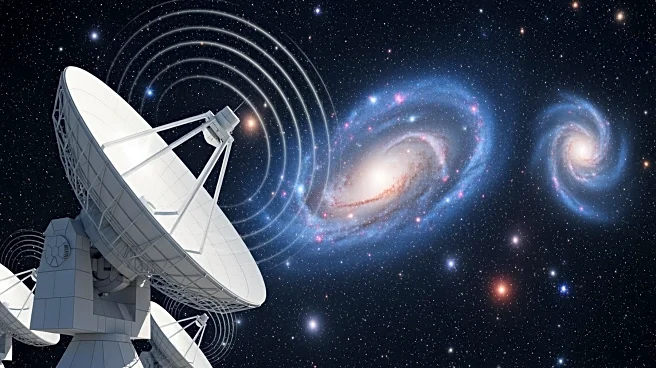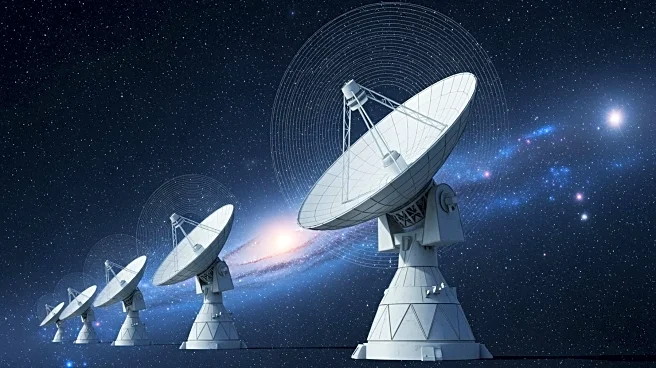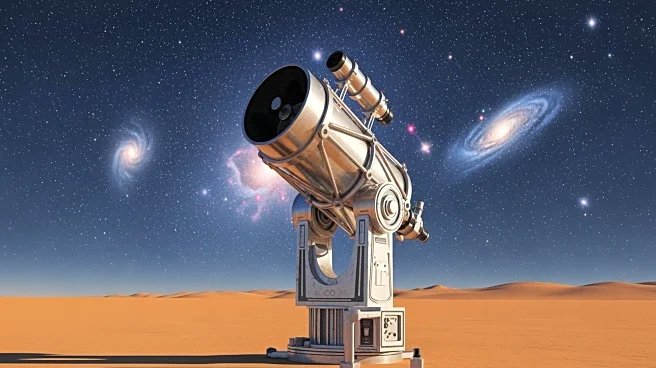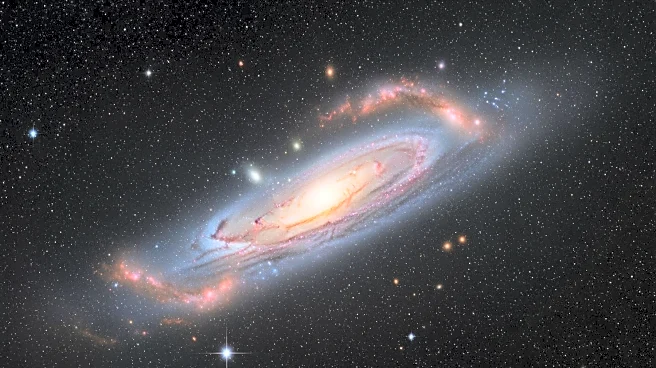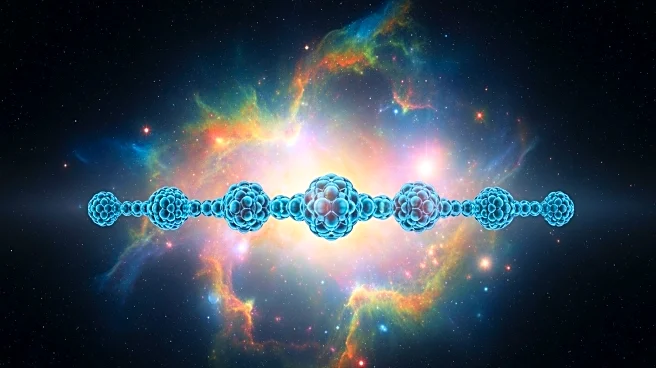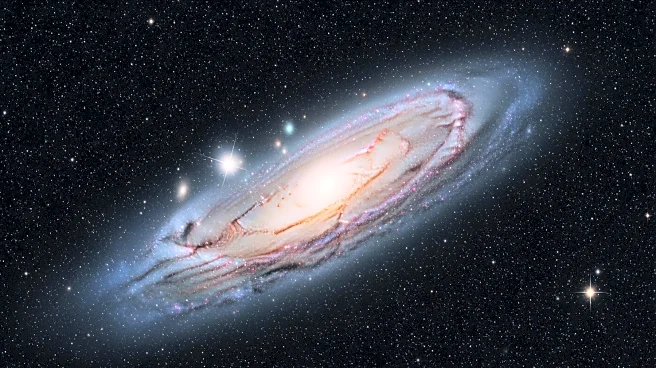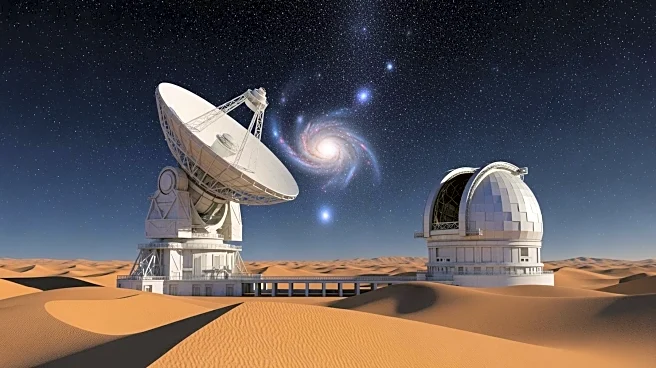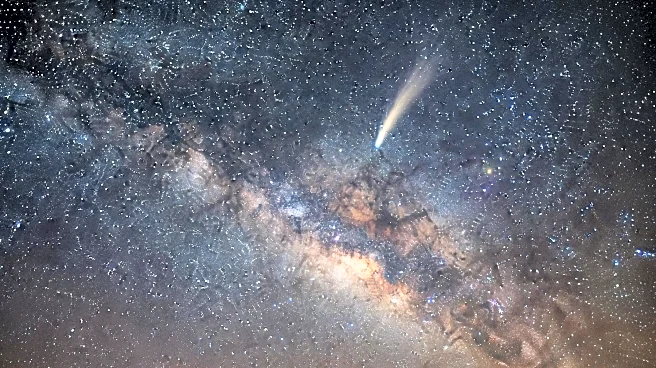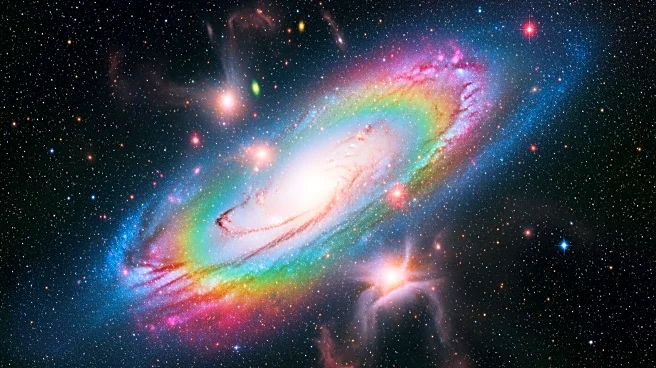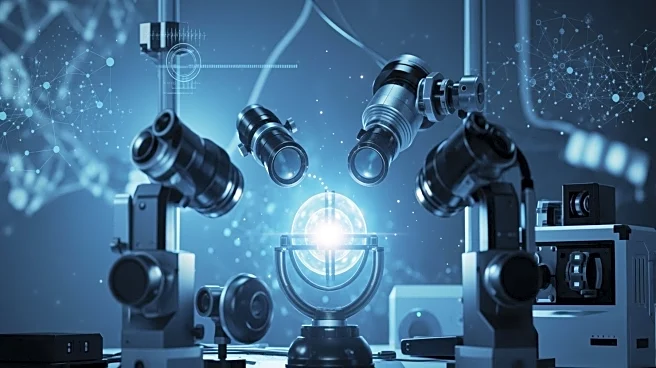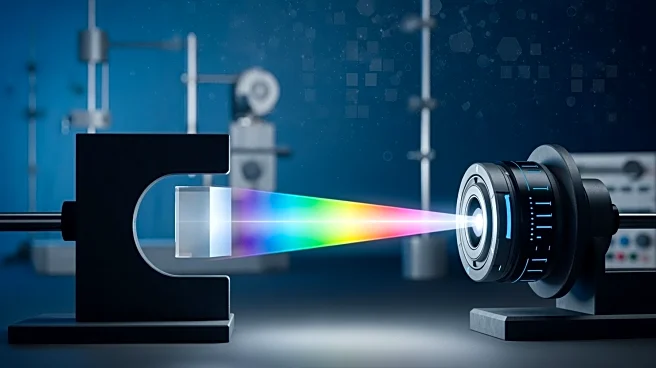What's Happening?
Researchers at Tel Aviv University have proposed a method to detect radio waves from the early universe, which could provide insights into the nature of dark matter. The study, led by Prof. Rennan Barkana,
suggests that during the 'cosmic dark ages,' dark matter formed dense clumps that attracted hydrogen gas, emitting radio waves. These signals, blocked by Earth's atmosphere, could be studied using instruments on the moon, where conditions are ideal. The research highlights the potential of lunar-based radio astronomy to explore the universe's early moments.
Why It's Important?
Understanding dark matter is one of the most significant challenges in modern physics. The proposed method of detecting radio waves from the cosmic dark ages could offer a new way to study dark matter's properties. This research could transform our understanding of the universe's formation and the role of dark matter in shaping cosmic structures. The findings may also influence future lunar missions, as space agencies seek meaningful scientific objectives for their projects.
What's Next?
The global race to return to the moon presents an opportunity to implement this research. Building a telescope on the lunar surface could enable the detection of radio signals from the early universe. This endeavor would require international collaboration and significant technological advancements. If successful, it could open a new window for testing theories of dark matter and lead to groundbreaking discoveries in astrophysics.
Beyond the Headlines
The study of radio waves from the cosmic dark ages could have broader implications for our understanding of the universe. By exploring a period before the first stars formed, scientists can investigate the fundamental properties of dark matter in a pristine setting. This research could also inspire new technologies and methodologies in radio astronomy, potentially leading to unexpected discoveries about the universe's earliest moments.
